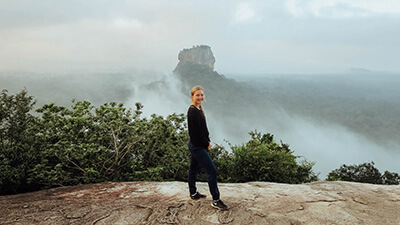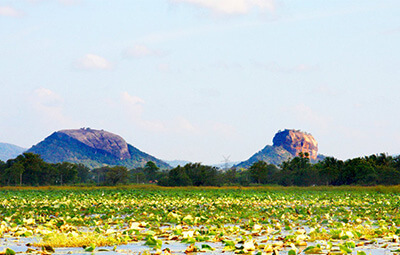Built by an obsessed monarch in the 5th century, Sigiriya or Lion Rock is an astonishing feat of engineering and construction. The most striking portion of Sigiriya, a terracotta and grey core of rock set in the cultural heart of Sri Lanka, rises a sheer 200 metres above a forested plain, its flattened summit sloping gently. A series of moats, ramparts and water gardens — remnants of an ancient city — spread out on two sides of the rock, with the remains of a pair of giant stone lion’s paws still guarding the staircase that leads to the summit, once occupied by a royal palace. Designated a World Heritage Site by UNESCO in 1982, Sigiriya is Asia’s best preserved city of the first millennium, showing complex urban planning around the base of the rock, combined with sophisticated engineering and irrigation skills in the palace perched on the summit. It is considered it to be one of the oldest tourist attractions in the world with visitors recording their impressions in some of the earliest-known graffiti. For just two decades in the 5th century AD, Sigiriya rose to prominence following a power struggle between two brothers, and an act of patricide that saw the then king walled-up alive by his son, Kasyapa. Fearful that his defeated brother would return from exile to extract vengeance, Kasyapa shifted the capital to Sigiriya and in 477 AD, he ordered the construction of the magnificent city around the base of the rock, and decreed that his palace should stand on top, a fortress that would keep him safe from retribution. Just seven years later, his astonishing palace in the sky was ready, complete with terraces and a complex system of irrigation. Kasyapa clearly had an eye for beauty. The pleasure gardens include a series of symmetric pools, channels and fountains that still spurt water after 1,500 years. Partway up the rock are the famous Sigiriya frescoes, featuring 21 bare-breasted damsels that may represent celestial nymphs, but were surely modeled on Kasyapa's own consorts. Halfway you'll encounter a pair of giant lion's paws, part of the original entrance, which required visitors to pass through the open mouth of a lion. The summit yields a dramatic vista of the surrounding jungle and contains the foundations of the palace complex, replete with bathing pools.

